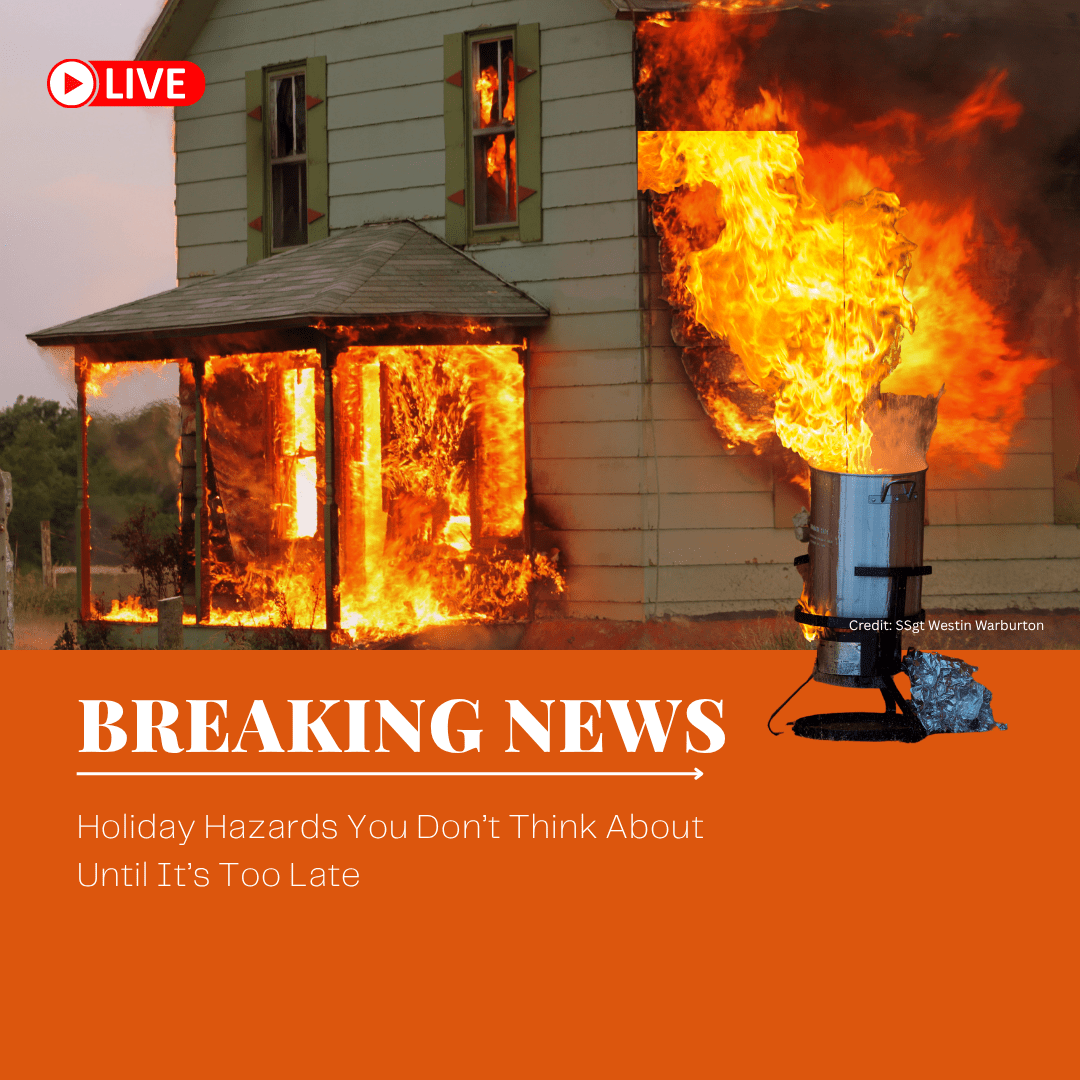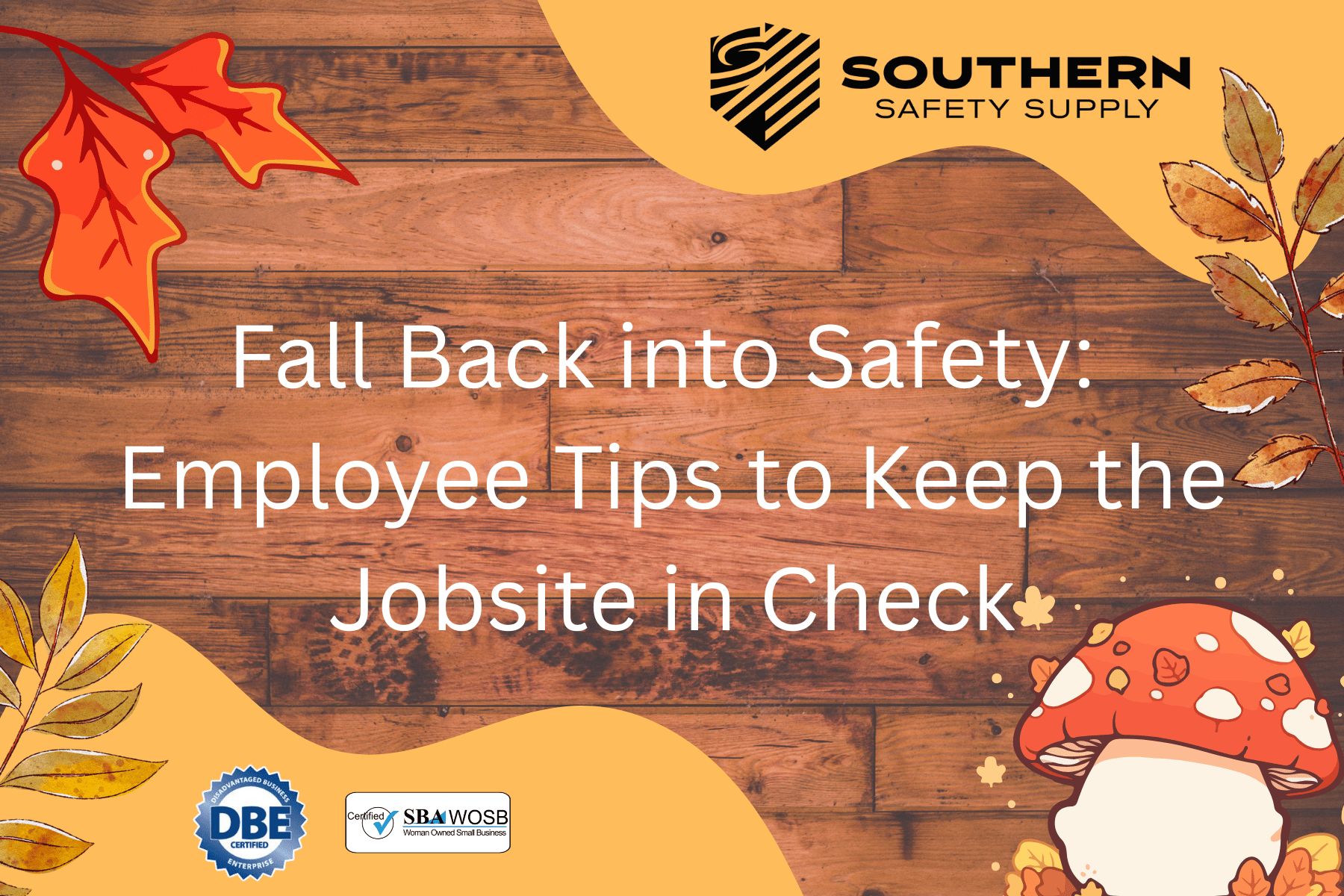
The holiday season brings joy, gatherings, and shared meals … but it also brings increased risks. Many of the safety hazards we face during November and December aren’t always top-of-mind until something goes wrong. At Southern Safety Supply, we’re committed to keeping our team, their families, and our sites safe. Here are some holiday hazards you may not think about — until it’s too late.
Driving & Travel Risks
- More vehicles on the road, heavier traffic, longer travel distances and sometimes unpredictable weather.
- Impaired driving is a heightened risk during holiday weekends. Encourage advance planning for sober rides.
- Tips: pre-trip checklist (tires, lights, brakes, wipers), plan time and route, avoid fatigue, don’t rush.
- Use this as a “stay safe, stay thankful” message especially if you’ll be traveling for Thanksgiving.
Cooking Fire Safety – Why Thanksgiving can be a Holiday Hazard
- Home cooking fires spike sharply around Thanksgiving. For example: the United States Fire Administration (USFA) found that approximately 2,300 residential building fires occur on Thanksgiving Day (2017-2019 average) with average annual losses of 5 deaths, 25 injuries and $26 million in property loss.
- Deep-fried turkeys are especially hazardous: more than 1,000 fires annually involve deep fryers; deep-fryer related fires cause on average 5 deaths, 60 injuries and over $15 million in damage each year.
Key cooking fire safety tips:
- Fully thaw your turkey if frying. Partially frozen turkeys + hot oil = major risk.
- Place fryers on a sturdy, level surface outside, at least 10 ft from structures and not under eaves.
- Never leave cooking unattended, especially when frying or deep‐frying. Unattended cooking is the leading cause of home cooking fires.
- Consider alternatives to oil-based fryers. Some fire safety agencies discourage outdoor, gas-fueled turkey fryers unless used by trained professionals.
“Enjoy the feast, but include safety in your recipe.”
Impaired Driving Is A Major Holiday Hazard To Look Out For
- Holiday celebrations increase risk of impaired driving.
- Promote sober drivers, ride shares, designated drivers.
- Even short tipsy trips or “just one drink” can be dangerous given road conditions and fatigue.
- Arriving safely is part of being thankful to your loved ones.
Fall Protection at Worksite – What We’re Doing
- Share the news: one of our employees is becoming certified as a “Competent Fall Protection Inspector” under the OSHA standard.
- Brief overview of the standard: 29 CFR 1926 Subpart M applies to construction where workers are at 6 ft (1.8 m) or more above lower levels and sets criteria for guardrails, safety nets, personal fall arrest systems.
- Explain why this matters: falls are among the most common serious injuries/fatalities in construction. Compliance improves safety, reduces risk, and helps protect our team.
- Mention the upcoming training and what team members should expect (inspections, updated procedures, new signage maybe).
- Call to action: “If you spot a potential fall hazard on a job-site, please report it immediately. Your vigilance matters.”
Bringing It All Together — Safety Culture Every Day
- The holiday setting leads to distractions, changes in routine, and increased risk. But the underlying safety mindset stays the same: be aware, plan ahead, look out for others.
- Encourage safety at home (cooking, travel) and at work (site procedures, PPE, fall protection systems).
- Encourage employees to share tips with family/friends — safety is a team sport inside work and out.
- End with gratitude: “We’re thankful for each of you and your dedication. Let’s make this season safe.”
Wishing you a safe, enjoyable, and thankful holiday season. Remember: travel with care, cook with caution, and work with vigilance. If you see something unsafe — at home or on-site — say something. We all benefit from staying safe together.


